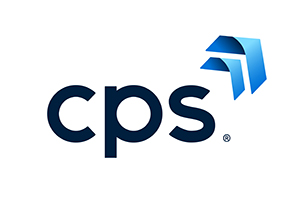SPONSORED CONTENT
You’ve assessed your 340B program, identified compliance concerns, and incorporated necessary corrective actions into your 340B program operations. Now, you can sit back and wait until it’s time for your official HRSA audit—right?
Staying ahead of the curve in the ever-changing world of 340B requires consistent review, documentation, and upkeep, not just when you’re due for an audit. As the audits become more complex and variable it’s important to establish a compliance strategy reinforcing continuous readiness.
So, what can your covered entity (CE) do to maintain a state of constant readiness for an audit?
Your To-Do List
Part 1: Document Preparation & Upkeep
| Task | Minimum Cadence | Additional Detail |
| Develop and implement standard operating procedures to organize all 340B program files (and keep them that way!) | Ongoing | Following a defined, structured method to organize all 340B-related documents is essential, especially for contract pharmacy service agreements and addendums. By staying organized, you can quickly find the files you need to review at any given time, track their recent updates, and stay on top of what needs to happen next and when. Knowing where to find any and everything is also particularly helpful during a HRSA audit as surveyors often request to review certain materials. |
| Maintain a list of all purchasing accounts | Ongoing | This list should be comprehensive, including purchasing accounts used across the CE and within the pharmacy. |
| Review Medicaid billing forms | Monthly | If your CE carves-in Medicaid for one or more states, auditing billing forms for compliance with state-specific requirements should be integrated with internal auditing processes. |
| Review and verify items on HRSA’s 340B Office of Pharmacy Affairs Information System (OPAIS) for accuracy | At Least Quarterly | During your OPAIS review, it is important to review all information in the database. Be sure to confirm all contract pharmacy details (e.g., address) listed in the system. The addresses appearing in your contract pharmacy agreements need to match the ones in OPAIS, which are based on each contract pharmacy’s DEA license and may change. |
| Keep a clinical services crosswalk that links OPAIS to hospital finance information and other important data for each participating location | Ongoing | Utilizing a template from a trusted 340B consultant can streamline resource development and ultimately help ensure you document all necessary components. |
| Check HRSA’s website to remain updated on the latest findings and risk areas | Monthly | Specifically monitor HRSA’s Office of Pharmacy Affairs website (OPA) for their latest information on the 340B program. This provides valuable, at-a-glance insights and links to sources with details to learn more. |
Part 2: Routine Assessment
Ready to take the next step? Download the second part of your to-do list today.
Your Support System
That to-do list may seem daunting, but it doesn’t have to be. Finding the right 340B program consultant can also help you get ready today and stay prepared for tomorrow.
CPS was one of the first companies to help CEs launch their 340B programs 30+ years ago. Today, our mission continues as we help hundreds of clients maintain program compliance, maximize 340B savings, and enhance vital community healthcare services through our comprehensive 340B and specialty pharmacy solutions. With a combined 200+ years of experience, all our consultants have previously overseen 340B programs firsthand. As such, we offer a full suite of 340B services from individual audits to complete remote program monitoring and savings optimization strategies.
The dedicated support goes even further with our Continuous Readiness Program. For each client, we assign a dedicated 340B consultant and pharmacy analyst to offer ongoing strategic support and continued engagement. Our experts truly become engaged members of your team to ensure consistent compliance, so you can maintain peace of mind. Learn more about CPS’s 340B compliance support.



